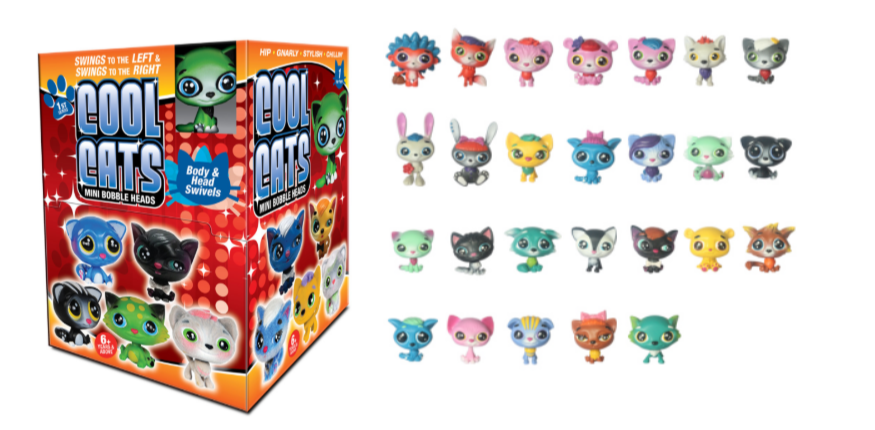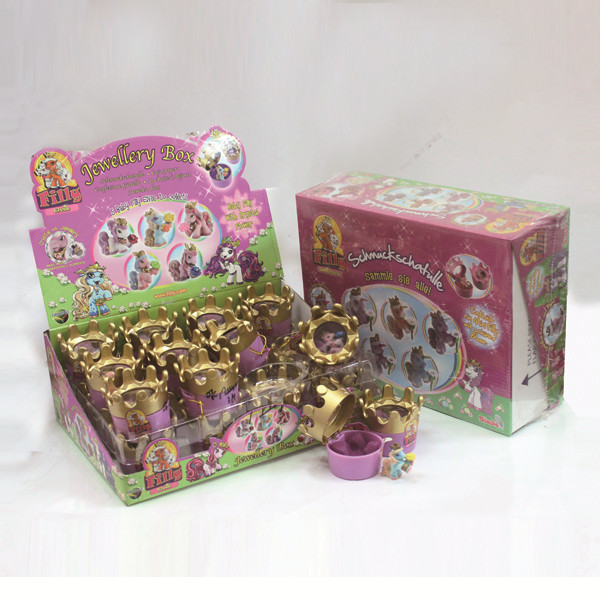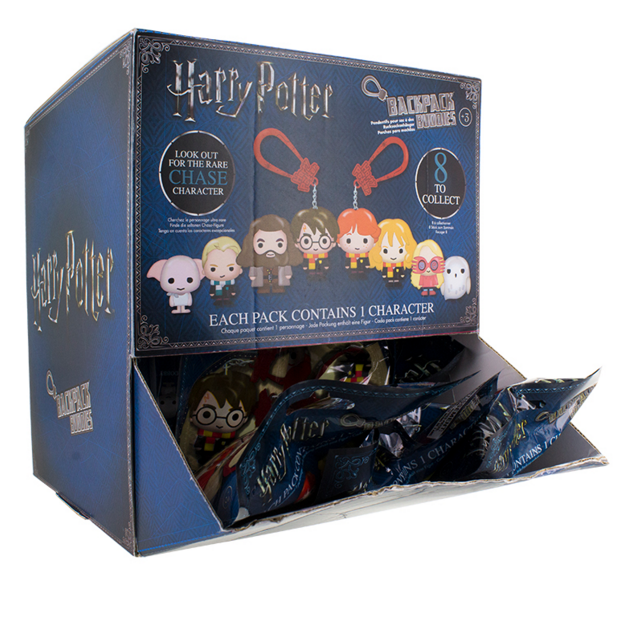Blind box figures have revolutionized the collectible toy industry, offering an exciting mix of surprise, rarity, and pop culture fandom. These blind box collectibles come in sealed packaging, making each purchase a mystery. From general anime blind boxes, action figure blind boxes, and vinyl plush blind boxes to renowned blind box brands like Popmart, Miniso, Sanrio, Smiski, Hiroho, and more, the market continues to expand.
Whether you're a collector, retailer, wholesaler, distributor, or toy brand looking to create custom blind box toys and random toys, this guide will help you understand the industry, its origins, market trends, top manufacturers, wholesale prices, and buying tips.
Let's dive into the details.

What is A Blind Box?
A blind box is a collectible figure sold in sealed packaging that hides its contents until opened. These figures come in themed series, typically common, rare, and secret chase figures. This randomness makes collecting blind box surprise toys both exciting and addictive.
Blind Box vs. Blind Bag: What's the Difference?
Both blind boxes and blind bags bulk purchases offer mystery collectibles. However:
• Blind Box Figures - Usually made of vinyl or PVC, come in rigid packaging and often feature higher-quality designs.
• Blind Bags - Typically contain small plastic toys or accessories and are made for mass-market retail.
Where Did Blind Boxes Originate?
The blind box culture has roots in Japan and developed in China, evolving from Fukubukuro (lucky bags) and gashapon (capsule toys).
1. Japanese Anime & Vending Machines - Japan popularized mystery collectibles through anime merchandise and vending machines, leading to major brands like Bandai and Re-Ment.
2. Chinese Collectible Market Growth - China expanded the trend with brands like Pop Mart, creating high-end blind box figures featuring designer art styles.
Today, both Japanese and Chinese blind box manufacturers compete to offer cheap blind box options as well as high-end, limited-edition collectibles.
Why Are Blind Boxes So Popular?
Blind box collectibles have surged in popularity due to their unique combination of mystery, rarity, and connection to pop culture. Over the past decade, these surprise toys have evolved from niche collectibles into a mainstream trend, captivating fans of all ages. From anime enthusiasts and casual collectors to serious toy investors, blind boxes offer an engaging and rewarding experience.
Several key factors have fueled the blind box boom:
1. The Surprise Factor - Every box is a mystery, making collecting fun.
2. Rare & Limited Editions - Some figures are hard to find, increasing demand.
3. Anime & Pop Culture Influence - Many sets feature anime, video games, and movie characters.
4. Social Media & Unboxing Culture - Blind box videos go viral on platforms like YouTube and TikTok.
5. Resale & Investment Value - Rare figures are sold for high prices on collector markets.
With these factors combined, it's easy to see why blind boxes have become a global phenomenon, driving demand among collectors, toy stores, and wholesale distributors alike.

What Is the Best Blind Box to Expect in 2025?
Predicting the best blind box figures for 2025 depends on emerging trends, evolving collector preferences, and new releases from top brands. While it's hard to say for certain which blind boxes will dominate the market, we can anticipate a few potential favorites based on current patterns:
• Best Anime Blind Box - Blind boxes featuring anime franchises like Demon Slayer and Pokémon could continue to capture attention, especially if new seasons or games fuel their popularity.
• Best Designer Blind Box - Brands like Pop Mart and Kidrobot might introduce fresh collaborations with popular artists, making them strong contenders for the top designer blind boxes of the year.
• Best Budget-Friendly Blind Box - With increasing demand for affordable collectibles, we might see more mini cheap blind box options from China offering quality figures at lower prices.
• Best Plush Blind Box - Companies like Sanrio and Disney could expand their plush keychain blind box lines, introducing new characters and exclusive designs to attract fans.
Of course, surprises are always possible, and new blind box trends could emerge as the year unfolds. For toy brands, retailers, wholesalers, and distributors, staying ahead of these trends is crucial to meeting consumer demand. If you're looking to launch your custom blind box toys, partnering with an experienced blind box figure manufacturer can make all the difference.
Let Weijun Toys Be Your Blind Box Toy Figure Manufacturer
√ 2 Modern Factories
√ 30 Years of Toy Manufacturing Expertise
√ 200+ Cutting-Edge Machines Plus 3 Well-Equipped Testing Laboratories
√ 560+ Skilled Workers, Engineers, Designers, and Marketing Professionals
√ One-Stop Customization Solutions
√ Quality Assurance: Able to Pass EN71-1,-2,-3 and More Tests
√ Competitive Prices and On-Time Delivery
How to Make a Blind Box? (Manufacturing Process)
If you're a business looking to create custom blind box figures, the process involves multiple stages to ensure high-quality, collectible-ready products. Here's a breakdown of how blind box toys are made:
1. Concept & Design - The process begins with sketching original characters and developing unique themes based on market trends and consumer preferences. Designers create detailed illustrations and turnaround sheets to guide production.
2. Prototype & Sculpting - A 3D model or hand-sculpted prototype is created to refine the figure's shape, details, and articulation (if applicable). This prototype serves as the master model for production.
3. Tooling & Molding - For plastic blind box figures, the prototype is used to create metal molds for mass production in ABS, PVC, vinyl, TPR, and more, ensuring consistent shape and fine details.
For plush blind box toys, designs are turned into fabric patterns, then cut, sewn, and stuffed to create soft, high-quality figures.
4. Painting & Finishing - The figures are painted using a combination of machine spraying and meticulous hand-painting techniques. Special finishes like metallic, glow-in-the-dark, or flocked textures can be applied for added appeal.
5. Packaging & Sealing - The final step is custom blind box packaging, designed to enhance the mystery and appeal of the product. Packaging materials may include cardboard boxes, foil bags, plastic capsules, or eco-friendly paper wraps, depending on the brand's preference and sustainability goals.
To ensure tamper-proof sealing, blind box makers usually use techniques like heat sealing, shrink wrapping, or security stickers to maintain the surprise element and authenticity. A well-designed package not only protects the figure but also enhances the unboxing experience, making it more exciting for collectors.
How to Tell What's in a Blind Box? (Tips & Tricks)
While blind boxes are designed to keep the contents a mystery, experienced collectors sometimes use subtle clues to make an educated guess. Here are some common strategies:
• Weight Differences - Some figures, especially rare or deluxe editions, may be noticeably heavier or lighter than others in the same series. Using a small scale can help detect variations.
• Codes & Serial Numbers - Some manufacturers print batch codes or tiny serial number variations on packaging that may indicate different figures. However, brands frequently change this to keep things fair.
• Box Shape & Feel - For soft packaging like blind bags, collectors may gently press or shake the package to detect unique accessories, weapons, or larger figure parts that give hints about the contents.
However, manufacturers are constantly updating packaging methods, such as adding internal cardboard inserts or uniform weights, to ensure every blind box remains a true surprise!

Where to Buy Blind Box Toys?
Whether you're a collector looking for rare finds or a business searching for bulk blind box purchases, here are the best places to buy blind box toys and random toys:
1. Online Marketplaces
• Amazon & eBay – Great for finding retail blind boxes and rare collectible figures from different brands.
• AliExpress & Alibaba – Ideal for blind bags bulk purchases, offering wholesale options from various suppliers.
• Weijun Toys – A leading blind box figure manufacturer specializing in OEM and ODM toy production. If you are a toy brand, distributor, wholesaler, or retailer, and need custom blind box toys in large quantities, Weijun Toys is one of the best choices.
2. Specialty & Anime Stores
Retailers like Hot Topic, BoxLunch, and local anime shops often carry the latest anime blind box wholesale figures, including brands like Sanrio, Pokémon, and Pop Mart.
3. Blind Box Subscription Services
Monthly subscription boxes like Loot Crate and Japan Crate offer exclusive mystery collectibles, often featuring anime, gaming, and pop culture themes.
Is Blind Box Legit?
Yes, blind boxes are legitimate collectibles, but some critics argue that they share similarities with gambling, as buyers don't know exactly what they'll get. However, unlike gambling, every purchase guarantees a physical product, making blind box toys a form of mystery shopping rather than a game of chance.
That said, buyers should still be cautious of scams and counterfeit products. To ensure you're purchasing authentic blind box toys, follow these tips:
• Buy from official retailers or trusted manufacturers – Purchasing directly from licensed stores, reputable brands, or verified online platforms reduces the risk of fake products.
• Check for authentic packaging and licensing logos – Well-known brands (e.g., Pop Mart, Kidrobot, Sanrio) include holographic stickers, brand stamps, or official seals to verify authenticity.
• Be wary of too-good-to-be-true prices – Counterfeit sellers often list fake blind box toys at extremely low prices on secondhand marketplaces. If a deal seems suspicious, it’s best to avoid it.

How to Start a Blind Box Business?
Starting a blind box business can be highly profitable, especially with the rising demand for mystery collectibles in anime, gaming, and designer toy markets. Whether you’re a toy brand, retailer, or entrepreneur, here's a step-by-step guide to launching a successful blind box business:
1. Find a Reliable Manufacturer
Partnering with an OEM/ODM blind box figure manufacturer is crucial for ensuring high-quality production and customization options. A manufacturer like Weijun Toys specializes in bulk orders, offering custom designs, premium materials, and mass production capabilities for businesses looking to create their own branded blind boxes.
2. Choose Your Theme & Characters
Decide on the theme and target audience for your blind box series. Popular categories include:
• Anime & Gaming Blind Boxes – Featuring characters from anime, video games, or pop culture.
• Designer Art Figures – Unique, artist-created collectibles for niche markets.
• Plush Keychain Blind Boxes – Soft, mini-sized plush toys for keychains and accessories.
• Mystery Action Figures & Vinyl Figures – High-quality collectible figures with interchangeable parts.
3. Set Your Pricing & Distribution Strategy
To attract buyers, research the best prices for blind boxes based on production costs, retail trends, and collector demand. Decide on your sales channels:
• Wholesale & Bulk Sales – Sell directly to distributors, retailers, and toy brands.
• Online Marketplaces – Offer your blind boxes through Amazon, Alibaba, or Shopify stores.
• Subscription Box Services – Partner with monthly mystery box platforms for exclusive releases.
4. Market Your Brand & Build Hype
Blind box businesses thrive on excitement and exclusivity. Use these marketing strategies to drive sales:
• Social Media & Influencers – Collaborate with collectors, toy reviewers, and unboxing influencers to promote your blind boxes.
• Limited Editions & Rare Figures – Introduce chase variants or exclusive designs to boost demand.
• Pre-Orders & Crowdfunding – Generate buzz by offering pre-orders or launching on Kickstarter.
Start Your Blind Box Business with Weijun Toys
Weijun Toys, a leading toy manufacturer in China, specializes in OEM and ODM blind box toy production for brands, retailers, wholesalers, and distributors. We offer end-to-end customization services, including rebranding, designs, colors, materials, packaging, etc. Whether you're looking to produce anime blind boxes, designer collectibles, plush blind boxes, or market-ready mini figure blind boxes, we provide one-stop solutions to meet your specific needs.
Where to Buy Wholesale Blind Box Products? Japan or China?
For retailers, wholesalers, and brands, choosing the right blind box manufacturer is crucial. Both Japanese and Chinese suppliers offer high-quality products, but they cater to different needs.
Japanese vs. Chinese Blind Box Suppliers: Which One is Better?
| Criteria | Japanese Manufacturers | Chinese Manufacturers |
| Price | Higher | More affordable |
| Quality | Premium craftsmanship | High-quality & cost-effective |
| Customization | Limited options | Fully customization options |
| Production Speed | Slower | Faster, efficient mass production |
| Best For | Luxury designer collectibles | Large-scale, affordable blind boxes |
If you're looking for mass production, competitive pricing, and custom blind box designs, China offers the best balance of quality, cost, and speed.
Top Wholesale Blind Box Suppliers
• Weijun Toys – A trusted blind box figure manufacturer specializing in OEM/ODM production with custom designs and bulk orders.
• Alibaba & Made-in-China – Online marketplaces connecting buyers with wholesale blind box toy suppliers.
• Toy Trade Shows – Industry events like the China Toy Expo showcase top blind box manufacturers and suppliers.
For businesses looking to create custom blind box collectibles, partnering with a reliable Chinese blind box maker like Weijun Toys ensures high-quality production, full customization, and competitive bulk pricing. Contact us today to get started!
Final Thoughts
The blind box market continues to grow, with new trends like digital blind boxes, AR-integrated collectibles, and sustainable blind box figures emerging. Whether you’re a collector, retailer, wholesaler, distributor, or business, understanding the origin, trends, manufacturing, and wholesale buying process is key to success.
Ready to Make Your Blind Box Toy Products?
Weijun Toys specializes in OEM & ODM blind box manufacturing, helping brands create custom high-quality collectible figures.
Contact us today. Our team will give you a detailed and free quote ASAP.
Let's get started!









